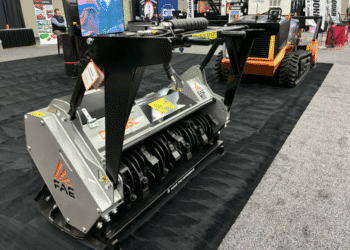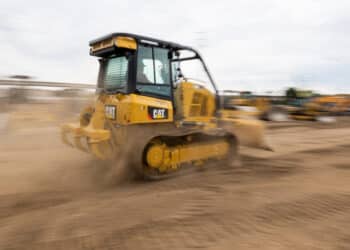Multiple court rulings related to tariffs over the course of May 28 and today have created a complex environment for the equipment industry that depends on the materials on both the production side and the consumer side.
With global supply chains and price of goods like aluminum, steel, autos and parts all impacted by shifting tariff rulings, equipment dealers, lenders and OEMs face more uncertainty.
The May 28 decision found that the president had exceeded his authority in using the International Emergency Economic Powers Act (IEEPA) to implement some of his tariffs, Dan Gardner, president of logistics consulting firm Trade Facilitators and co-founder of forwarder and customs broker Trade Accelerators, said during a webinar today hosted by the Associated Equipment Distributors.
The decision “is really important because it’s separate from what Section 232 implies, which is specific to steel and aluminum,” he said.
Currently, the Section 232 tariffs on steel, aluminum, autos and auto parts as well as the Section 201 tariffs on solar panels remain in effect, according to Wells Fargo’s U.S. Tariff Tracker.
Gardner said the seven tariff categories enforced under the IEEPA relate to:
- China;
- Hong Kong;
- Auto and auto parts;
- Mexico;
- Canada;
- Steel; and
- Aluminum.
Today’s court rulings
While the May 28 court ruling challenged these tariffs, the administration of Donald Trump immediately filed an appeal and the U.S. Court of Appeals granted a temporary pause on a ruling against Trump’s global tariffs today. The appeals court intends to evaluate the government’s request for review, with a briefing schedule extending through June 9, although the administration has indicated it will take the case to the U.S. Supreme Court if necessary.
In a separate ruling today by U.S. District Judge Rudolph Contreras in Washington declared some of Trump’s tariffs unlawful, specifically in a case brought by small toy manufacturers, according to Bloomberg. While the scope of the ruling remains limited to the plaintiffs, the decision poses another legal challenge for the administration.
Tariff stacking concerns
As more tariffs go into effect and others loom, the “almost cumulative” impact of tariffs has led to concerns of “tariff stacking” driving up tariff costs in key regions for the equipment industry and resulting in higher prices for consumers, Gardner said.
When multiple tariffs apply to a product based on its country of origin, they are often “stacked” cumulatively rather than applied selectively, with aluminum, steel. autos and auto parts currently subject to stacked tariffs.
In 2018, Trump enacted several tariffs that still exist, but with several more tariffs taking effect in 2025, the two sets of tariffs have resulted in tariff stacking, driving up prices, Gardner said.
“These days, whether you’re an importer or as a distributor that buys merchandise from companies that do import, the price you pay is going to be impacted by the tariffs.”
Stacked tariffs have created high effective duty rates in some markets, with some in China exceeding a 200% effective duty rate, Gardner said.
“If you were to pick a country and an industry that is subject to the highest level of tariffs, it would be steel and aluminum and its derivatives coming out of China,” he said. “It depends on the product, but with anti-dumping and countervailing duties, you’re north of 200% as a duty rate there.”









